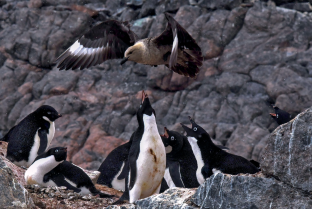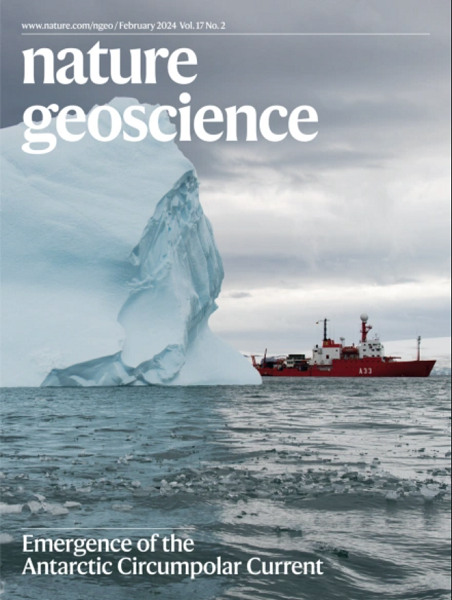揭开南极洲生物多样性的神秘面纱
IF 15.7
1区 地球科学
Q1 GEOSCIENCES, MULTIDISCIPLINARY
引用次数: 0
摘要
在气候变化的影响下,追踪生物多样性的潜力具有时间敏感性,尤其是在最偏远的地区。一项新的分析满足了绘制南极洲陆地植被图的长期需求--这是确定碳和养分循环热点的关键一步。本文章由计算机程序翻译,如有差异,请以英文原文为准。


Unmasking Antarctica’s biodiversity
Tracking biodiversity potential is time-sensitive under climate change, especially in the most remote areas. A new analysis fulfils a long-standing need to map the terrestrial vegetation across Antarctica — a crucial step to identify carbon and nutrient cycling hotspots.
求助全文
通过发布文献求助,成功后即可免费获取论文全文。
去求助
来源期刊

Nature Geoscience
地学-地球科学综合
CiteScore
26.70
自引率
1.60%
发文量
187
审稿时长
3.3 months
期刊介绍:
Nature Geoscience is a monthly interdisciplinary journal that gathers top-tier research spanning Earth Sciences and related fields.
The journal covers all geoscience disciplines, including fieldwork, modeling, and theoretical studies.
Topics include atmospheric science, biogeochemistry, climate science, geobiology, geochemistry, geoinformatics, remote sensing, geology, geomagnetism, paleomagnetism, geomorphology, geophysics, glaciology, hydrology, limnology, mineralogy, oceanography, paleontology, paleoclimatology, paleoceanography, petrology, planetary science, seismology, space physics, tectonics, and volcanology.
Nature Geoscience upholds its commitment to publishing significant, high-quality Earth Sciences research through fair, rapid, and rigorous peer review, overseen by a team of full-time professional editors.
 求助内容:
求助内容: 应助结果提醒方式:
应助结果提醒方式:


